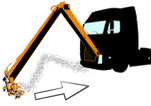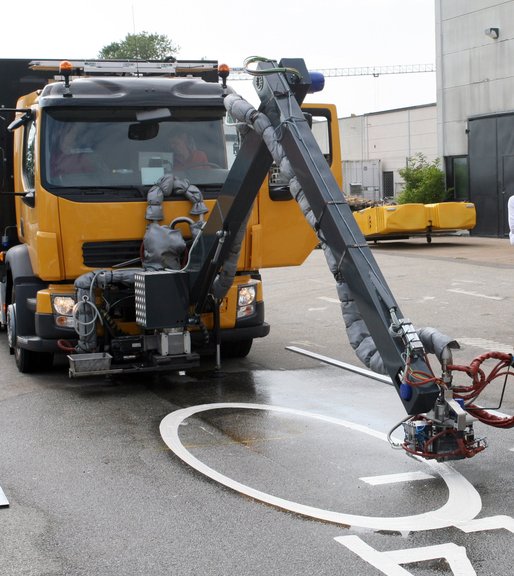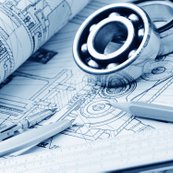Road marking robot
Previously, the white markings on our roads were for many years been painted in an efficient and rational way by specially equipped trucks. On the other hand, symbols such as directional arrows, speed limits and pedestrian crossings were painted by hand. In the Nordic countries, the road administrations have for several years actively worked to reduce the risk of accidents when working on road maintenance. In order to increase productivity while reducing the risk of accidents, Intelligent Machines have developed an automatic road marking robot for painting road marks, on behalf of Street Smart Equipment, a company dealing with road maintenance equipment. The new robot makes it possible to automatically paint all types of road markings without personnel working directly on the road. The robot provides a powerful productivity increase as the need for TMA-Vehicles (protection vehicles) decreases and workload per worker increases.
The road marking robot has been field-tested with excellent results and will now be used in roadwork on the Swedish road network from the year 2015.
Technology description
The heart of the system consists of a 6-meter long robotic arm made out of lightweight material, mounted at the front of a heavy truck. The arm has 5 axes (degrees of freedom) and each joint is driven by an electric servo motor through a gear. This electric drive system allows for better controllability and precision than other methods, such as hydraulic operation and by avoiding the use of hydraulics the repairs and maintenance will be less work. Another advantage is the lower fuel consumption. The white paint is composed of a thermoplastic heated in a pot on the truck bed to 200 ° C. It is pumped into an extruder which is mounted at the front of the robot arm. From the extruder, a 50mm or alternatively 100mm wide strip of plastic material is extruded which then sticks to the asphalt. Before the plastic has time to cool, the surface is sprayed with glass beads for increased reflection. The road marking is "painted" onto the roadway by extruder which is carefully controlled by the robot arm according to pre-programmed patterns. The accuracy is between 5 - 10 mm and the system is equipped with a vision system that helps the operator to place the new road markings in a straight and correct method on the roadway. The operator selects symbols and controls the system using a touch screen with a graphical user interface.
Control box
The control box contains all the electronics necessary to control the robot - a servo amplifier, computer systems and safety circuits. The servo amplifiers are safety rated and have double microprocessors in order to improve redundancy.
Technical challenges
- How to achieve high enough accuracy, stability and precision with a 6 meter long robot arm mounted on an unstable platform such as a truck.
- Managing the high requirements of electrical power for the servomotors.
- Develop a work process for the operator and an intuitive and easily handled user interface.
- The safety aspects.
Fact box
- IM has made the initial technical feasibility study.
- IM has constructed a working prototype and carried out tests in full scale to verify the technology solution.
- IM has developed a set of requirements and an overall system solution.
- IM has undertaken the entire development of the project from developing software, hardware and mechanics into a finished product.
- IM has built the first product for commercial use.
User interface
In order to quickly and accurately place a road marking on the roadway, augmented reality is used. A camera provides an image of the roadway on the screen where the new marking will be placed. The operator then selects from a library of symbols what the robot is to paint. The selected symbol is displayed in the camera image as an animation and the operator can place the animated selection at the correct spot on the roadway. Various graphical tools in the image facilitate the work.


